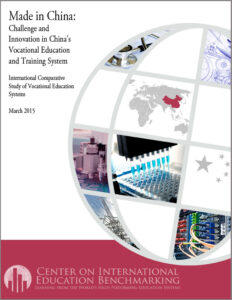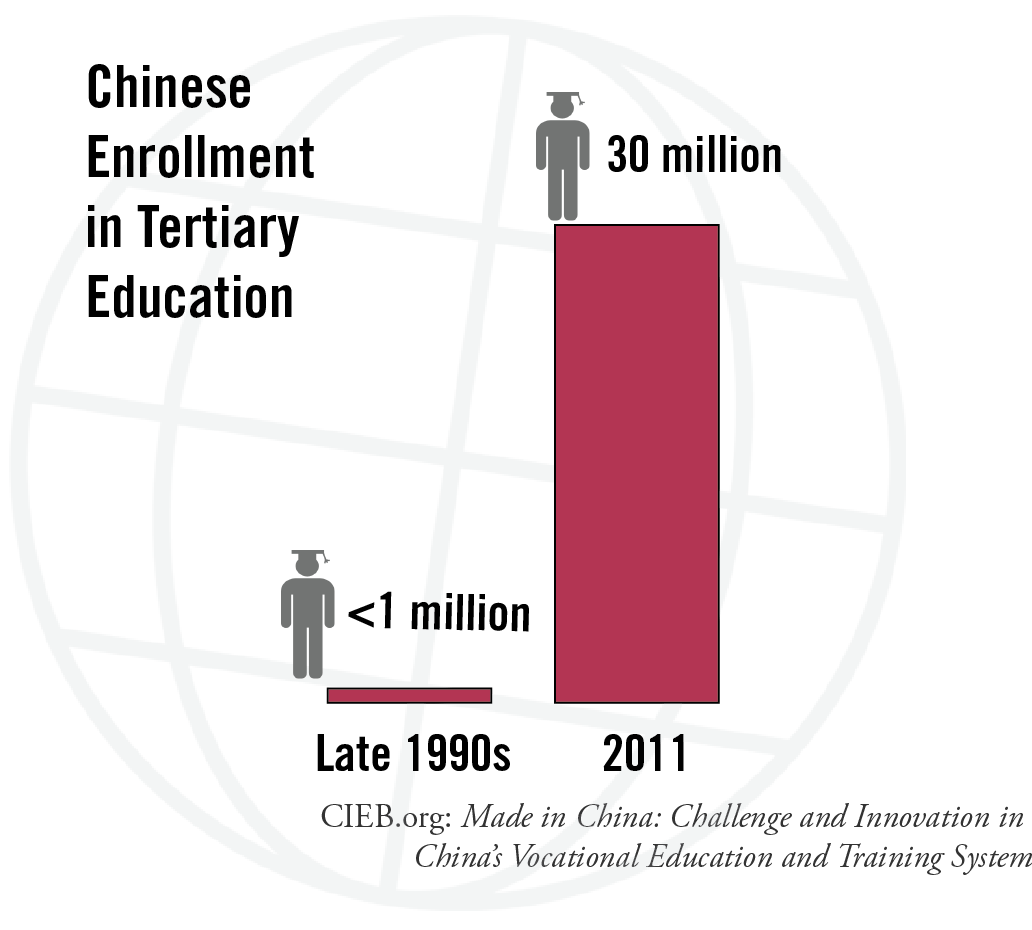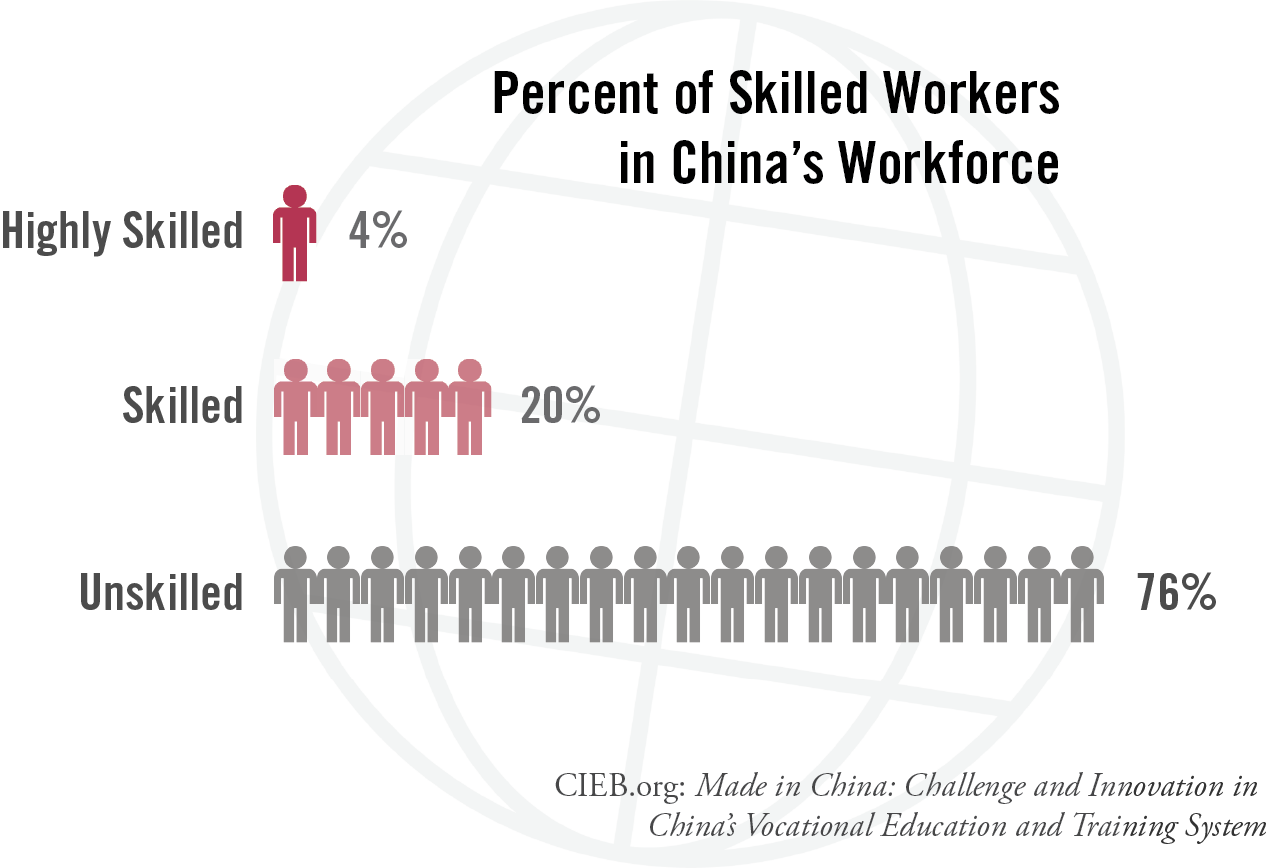As China embarks on a bold plan to transform its economy from one built on low-cost, low-skill exports to an economic model based on services, innovation, and consumer demand, it will need to evaluate and adapt the structure, organization and scale of its vocational education and training (VET) system—the largest such system in the world. Substantial challenges confront Chinese policy makers as they consider how to rebuild their VET system to support that economic transformation, but, the report contends, one would be ill-advised to underestimate a country that has more than once achieved no less daunting goals in education since China was opened to foreign investment in 1978.
These are the findings of a groundbreaking report, Made In China: Challenge and Innovation in China’s Vocational Education and Training System, from researchers at the Center on International Education Benchmarking (CIEB) of the U.S.-based National Center on Education and the Economy (NCEE). The research team, comprised of NCEE President Marc Tucker, the Asia Society’s Vivien Stewart, CIEB’s Director Betsy Brown Ruzzi, and Jobs For the Future’s Nancy Hoffman, conducted dozens of interviews with Chinese government, business and education leaders and visits to vocational schools and colleges in China and distilled their findings into this new report. Vivien Stewart authored the final report.
The report finds that despite world-leading academic performance in Shanghai schools, educational opportunities and outcomes across the country remain highly uneven. With the largest population in the world, and now the world’s second largest economy, China will need a more skilled and productive labor force to break free from its current reliance on a low-cost, low-skill manufacturing for export economic model, according to the researchers.
To address the shortage in high-skill workers, Chinese policy makers are designing a new approach to human capital, including a major focus on developing a modern vocational education and training system. Standing in the way of those ambitious plans are substantial challenges facing China’s VET system, as identified by the CIEB research team, including:
- The curriculum design of VET programs is narrow.
- Connections to industry are weak.
- VET has low status in the public mind.
- Structural barriers exist between vocational education and academic education.
- A mismatch exists between the needs of employers and the capabilities of graduates.
- VET faculty have limited experience in industry.
- Occupational standards and qualifications systems need development.
- Adult education is underdeveloped.
- Bureaucracy of VET hampers innovation.
China is engaged in a period of significant experimentation in VET. To overcome these obstacles, successfully modernize its VET system and build the innovation-centered economy its government has publicly pledged to develop, the CIEB researchers have made a series of recommendations including:
- Given the size of China, create models of systems matched to the different stages of economic development in different provinces .
- Build a governance system that is substantially employer-driven.
- Redesign the programs and curricula of VET institutions.
- Create incentives for employer participation and for institutions to upgrade their programs to international standards.
- Build bridges between VET and academic and higher education.
- Address the low public perception of VET.
Despite possessing a VET system with room for substantial improvement, China has propelled itself from a deeply impoverished and underdeveloped nation to an economic engine rivaling the United States as the center of global growth. Just as the nation’s enrollment in tertiary education boomed from fewer than 1 million to more than 30 million since the late 1990s, so too is China likely to dramatically increase participation in its VET system. Whether the surge in raw enrollment is accompanied by successful reform and reorganization of the already sprawling system depends on the actions of China’s policy makers.
This is part of an international comparative study of vocational and technical education systems aimed at informing the efforts underway in many countries to redesign education and skill-formation systems for the 21st century. Other titles in this series include The Phoenix: Vocational Education and Training in Singapore and Gold Standard: The Swiss Vocational Education and Training System. The series culminated in a book edited by NCEE Founding President Marc Tucker, Vocational Education and Training for a Global Economy, which provides in-depth case studies of the VET systems of Switzerland, Singapore, China and the United States as well as policy recommendations for the U.S. to strengthen its own VET system.








